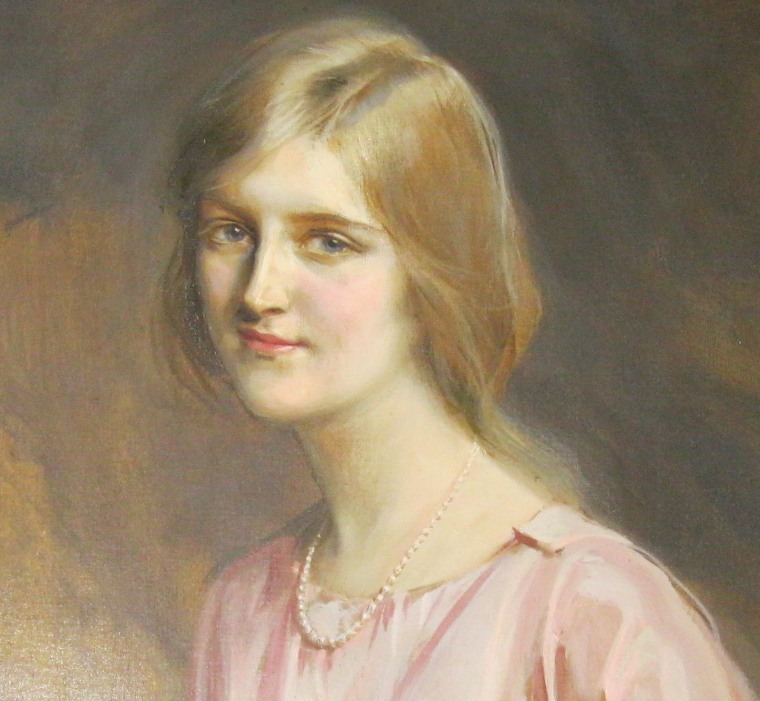SANTA BARBARA, Calif. — Though the roof leaks a bit, a visitor to Huguette Clark's unused mansion here is struck by the resilient grandeur of unimaginable wealth, along with the waste of decades of emptiness.
Though its owner last visited in the Truman administration, the Clark estate overlooking the Pacific has been lovingly cared at the cost of $40,000 per month.
This weekend the estate administrators allowed me to be the first journalist to report on a tour of Bellosguardo, one of the empty estates owned by Huguette Clark, the reclusive heiress to a copper fortune that at one time rivaled that of the Rockefellers. She is believed to have last visited in about 1953. I was accompanied by Huguette's cousin, Paul Clark Newell, Jr. He’d been here before, on Huguette's invitation a decade ago, as we described in our book about the Clark family, "Empty Mansions: The Mysterious Life of Huguette Clark and the Spending of a Great American Fortune."
Gallery: Take a Tour of Huguette Clark's Empty Mansion, Bellosguardo
The 23-acre property, with a 21,666-square-foot French mansion high on a mesa above Santa Barbara's East Beach, has been the subject of legend here for decades. Though the property has 1,000 feet of frontage on the water, and the view of the ocean is stunning, Bellosguardo is so well hidden by trees that one has to fly over the property to get a look at it.
Up close, Bellosguardo appears to be in pristine condition. The only residents during these decades have been the estate manager, his dogs, and a tame family of foxes. As we arrive, a fox is at work by the reflecting pool and the grove of 80-year-old orange trees, hunting in the sun for lizards.
Inside the great house, there is a touch of the eccentric: In Huguette's dressing room, the covered chairs come in two sizes: full-sized ones for adults, and tiny, half-height chairs for her collection of French and Japanese dolls.
And out in the whitewashed carriage house, automobiles sit unused: a 1933 Chrysler Royal Eight convertible and an enormous black 1933 Cadillac seven-passenger limousine, both with California plates dated 1949.
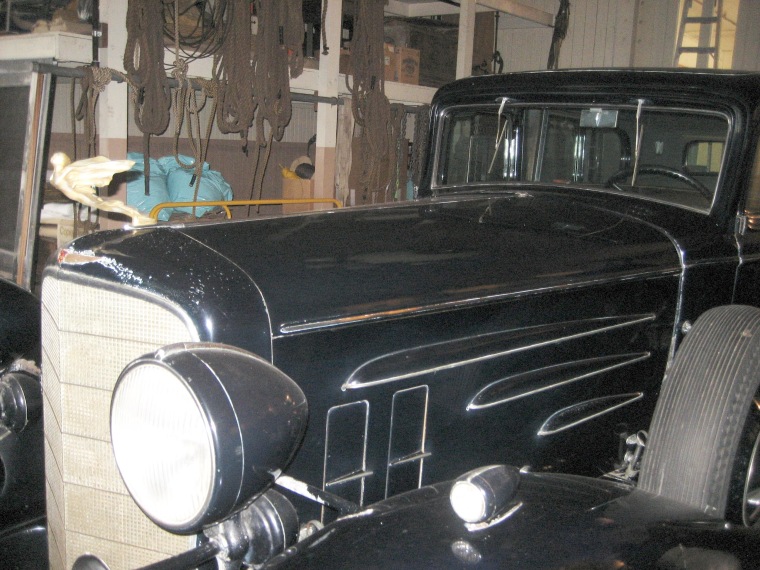
[See more photos from Bellosguardo in a gallery on this page. Hundreds of photos from all of Huguette Clark's homes are on the website of the bestselling book "Empty Mansions," at http://emptymansionsbook.com. All of NBC's stories on the Huguette Clark mystery are at http://nbcnews.com/clark/.]
First-class condition
Huguette (pronounced "oo-GET") Marcelle Clark was the youngest child of Sen. William Andrews Clark (1839-1925), one of the copper kings of Montana, a railroad builder, founder of Las Vegas, and one of the richest men of the Gilded Age. His daughter, born in Paris in 1906 while her father was in the Senate battling Teddy Roosevelt's environmental reforms, inherited one-fifth of his fortune. A shy artist, she rarely left her New York apartments but had a circle of friends whom she kept in touch with mostly on the telephone. She lived her last 20 years in a simple hospital room, dying in 2011, during the Obama administration, two weeks short of her 105th birthday.
Her father bought this property in 1923, for a price said to be $300,000 in cash, or about $4 million in today's dollars. The Italian villa here was damaged in the 1925 Santa Barbara earthquake, though it stood long enough for Huguette Clark to be married here in 1928. Huguette's mother, Anna, built Bellosguardo in 1933 in an 18th-century French style with Georgian influences, a sturdy chateau. The entire structure is of concrete, including the walls, floors and ceilings finished in a variety of fine woods, and the exterior is clad in a veneer of Indiana limestone three inches thick. There are 27 rooms in the main house, including six bedrooms for the family and three small bedrooms for servants. The house has been appraised, perhaps conservatively, at $85 million.
"My dear Mother put so much of herself into its charm," Huguette wrote in 1988 to the Santa Barbara mayor at the time, Sheila Lodge, "and had the satisfaction of knowing that during the great depression she was a bit helpful in giving much needed employment."
When Huguette inherited Bellosguardo from her mother in 1963, she gave the staff two instructions: Everything was to be kept in "first-class condition," and nothing was to change.
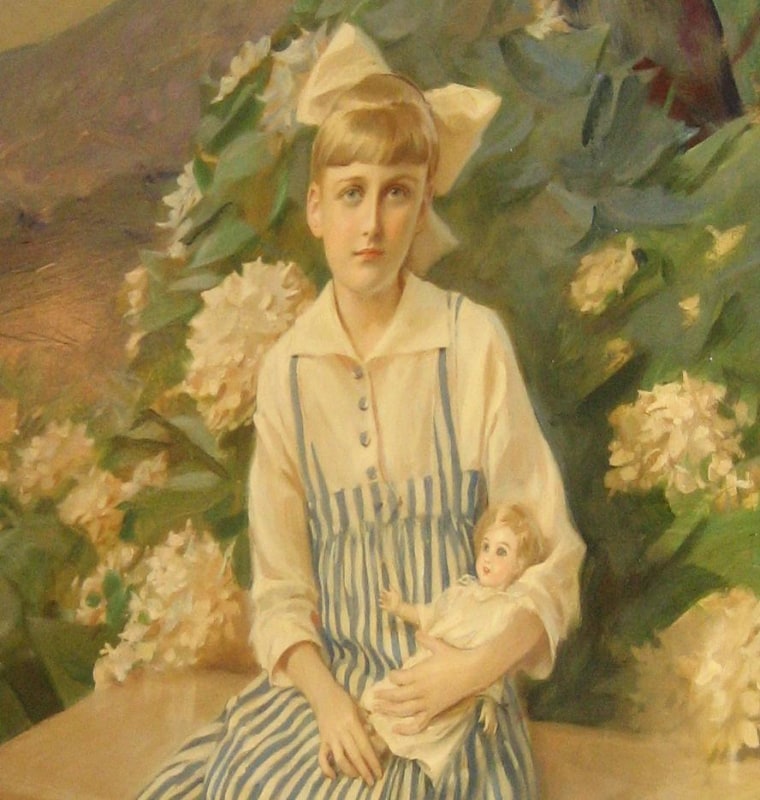
The dining room, with its whimsical hand-painted canvas ceilings and walls made from 167 hand-carved panels of black oak, could easily be ready to seat a party for dinner tonight.
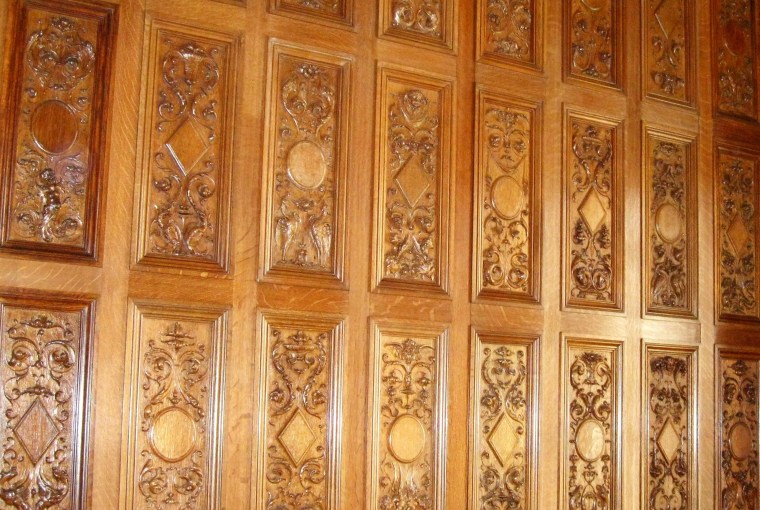
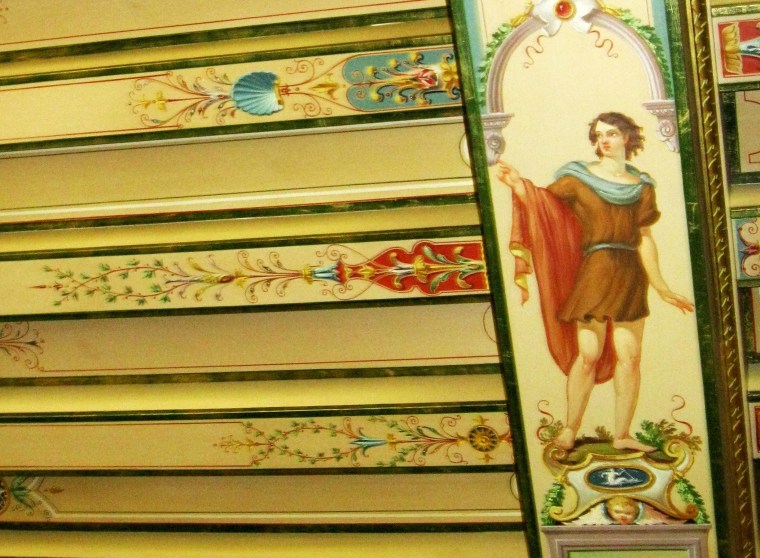
Linens and carpets and draperies are carefully wrapped in brown paper, dated and signed by the houseman in the 1960s. Dishes were washed, covered, and dated in the 1990s.
Huguette's private suite affords absolute privacy. Besides an enormous painting studio with 17-foot ceilings, this wing contains a loft, or tall closet, for the artist to store her canvases, as well as a private kitchenette and a back stairway leading up to her bedroom and sitting room.
Beside the house, hundreds of rose bushes have been removed from her mother's circular garden, with each variety of rose recorded and location mapped in case anyone should like to restore it.
Leading out to the formal gardens, a passage cut through a hedge has been maintained. Huguette had insisted to the estate manager that it be kept exactly as she remembered it.
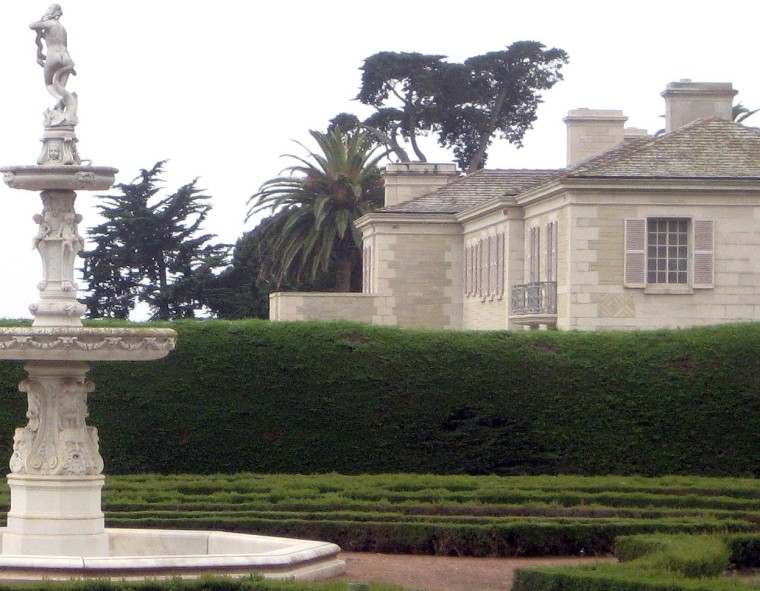
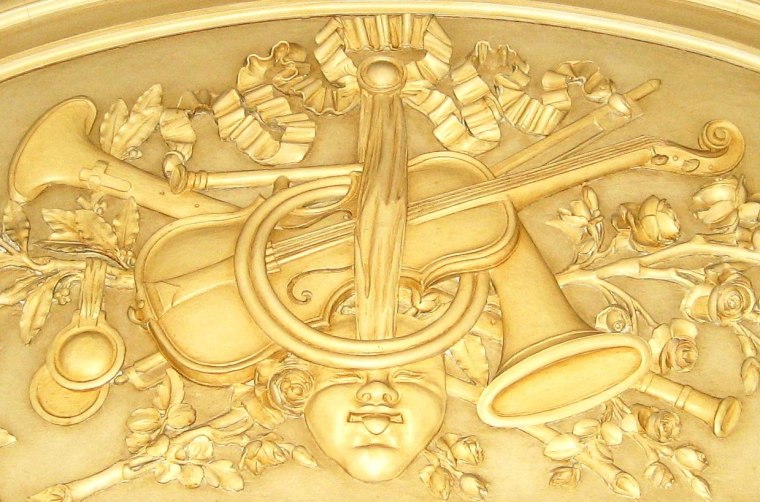

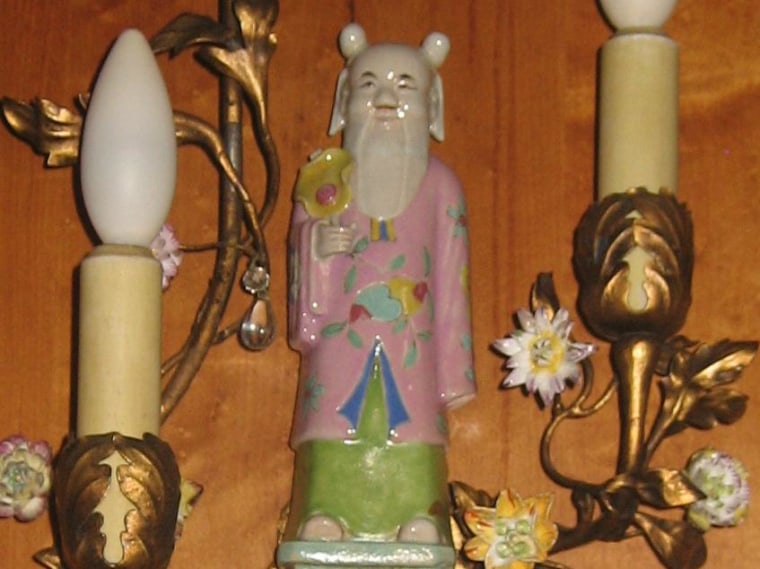
Inside, carpet runners protect the hallways of red oak and black walnut in herringbone and Versailles patterns. The furniture is covered, and the paintings, too. In the music room with its twin Steinway pianos, Anna Clark's two ornate French pedal harps lay on their sides, as protection in case of earthquakes, and the game tables are no longer set for bridge and chess.
The service area of the home is right out of “Downton Abbey,” containing a kitchen, pantry, staff dining room, butler's pantry, houseman's office, housekeeper's office, butler's office, meat locker, pastry room, a room for storing trays and a room for cutting flowers.
A sign in the service area indicates how little change was allowed at Bellosguardo. The sign bears the name of a former houseman.
On 29 November 2001,
I moved a white,
wooden step stool from
this room to the Main
Wing elevator as an aid
to rescue in case the
elevator gets stuck.
Harris
An uncertain future
Passing the enormous signs on the bluff, "PRIVATE KEEP OUT," we were led on our tour by Mario Da Cunha, an architect who has been the houseman at Bellosguardo for three years. Dusting and turning the hundreds of leather volumes in the library — Goethe, Dante, Homer, Virgil, tales of the Arabian Nights — is just one of his hundreds of tasks required to keep the great house in shape for its potential future use as a home for the arts.
The settlement last year of Clark's disputed last will and testament left this home to a new foundation to foster the arts, just as her will had directed. The trustees of the Bellosguardo Foundation will be appointed by the New York attorney general, with seven of the 10 to be nominated by the mayor of Santa Barbara, Helene Schneider. Her political aide has been leading potential trustees on tours of the house, seeking those with deep pockets who will donate and raise money for the foundation.
The goal, Schneider said, "is to open the Bellosguardo house and gardens to the public as a center that will foster and promote the arts." She called the Clark home "an amazing opportunity to create a magnificent organization that will significantly add to our strong artistic and cultural heritage."
Under the settlement, the foundation will begin life "house poor." It will receive the property here, with its appraised value of $85 million plus about $6 million in furnishings. But after $34 million was paid out to her relatives, who contested her will, and about $50 million to the lawyers on all sides, there was only about $5 million in cash left to fund the foundation. The final amount will be determined by the sale of other estate property in June at Christie's in New York, and by the amount of interest and penalties that the IRS assesses on unpaid gift taxes that were due when Clark died. The foundation also receives Clark's doll collection, valued at $1.7 million.
The roof needs repair, the houseman Da Cunha says, and may need more extensive work to tie it into the walls for seismic protection. If the house were opened up for visitors, it may need changes to be compliant with access laws for the disabled. The plumbing and electrical fixtures are from the 1930s. Most of the bathrooms bear signs, "Do not use water," to prevent leaks.
But aside from tiny cracks on the walls here and there, the only flaws are small holes in an upstairs floor apparently left by an occupant wearing golf shoes. (Huguette was a charter member, 1928, of the Valley Club in neighboring Montecito.)
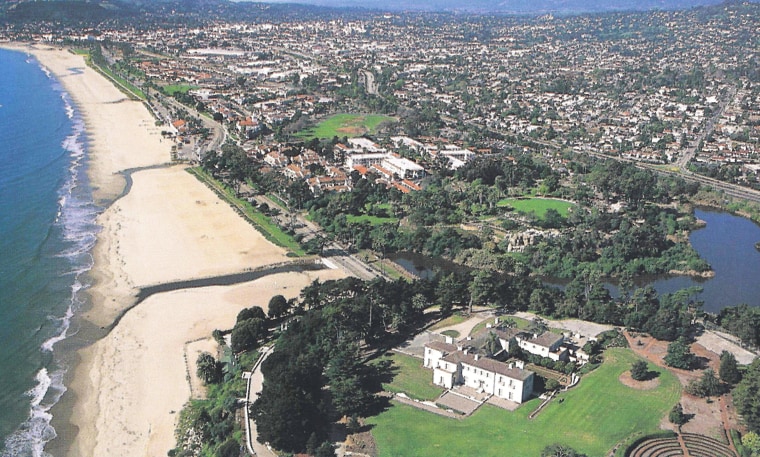
Once it knows what money it has to work with, the new board must settle on a mission. What exactly does it mean to "promote the arts"? Should the house become a house museum like the Frick Collection in New York? Should it form a partnership with the Santa Barbara Museum of Art? Should it be rented out for weddings? Or should the board sell the house to a private owner and use the money to meet its mission?
Huguette Clark said often that she wanted the home to be preserved and used for the arts, her mother's great love. Huguette rebuffed efforts by the Shah of Iran to buy the home, turned away attempts by Hollywood moguls to buy it.
If her sentimentality made her reluctant to sell her mother's home, it also kept her away. In one of her telephone conversations with her cousin Paul Newell, he asked why she no longer visited Bellosguardo.
"Well," she replied, "when I think of Santa Barbara, I always think of times there with my mother, and it makes me very sad."
Bill Dedman is the co-author of the bestselling book "Empty Mansions: The Mysterious Life of Huguette Clark and the Spending of a Great American Fortune." The co-author, Clark's cousin Paul Clark Newell Jr., was not one of the relatives who sued seeking her fortune. More photos are on the book's website.
